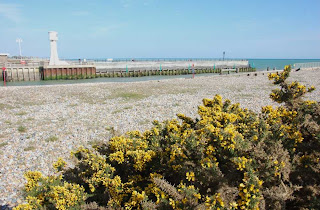Yesterday a ninety minute drive took me to Longstock, Hampshire where UK Butterflies held their third annual Photography Workshop. It was an excellent day, with some different topics from last year. It included a field trip to nearby Danebury Hill where Neil Hulme found a Green Hairstreak, my first sighting of this beautiful butterfly.
I took away many good tips and notes. The event was organized by organized by Pete Eeles, Gary Richardson & Lisa Baker-Richardson. The speakers were Roger Buchanan (Basic concepts), Roger Harding (Equipment), Technique (John Bogle), Digital Photogrpahy (Pete Eeles & Gary Richardson), Danebury Hill (Mervyn Grist).
Pete Eeles
Waxing lyrical about the wonders of nature was guest speaker Matthew Oates. Matthew’s entertaining and thought provoking talk included the following which I would like to share:
---
"Beauty is truth, truth beauty," – that is all
Ye know on earth, and all ye need to know.
---
“If a man could pass through Paradise in a dream, and have a flower presented to him as a pledge that his soul had really been there, and if he found that flower in his hand when he awake - Aye, what then?”
Samuel Taylor Coleridge
---
“The Wife. Look at the butterflies!
Like floating flowers
Came butterflies, the souls of summer hours,
Fluttering about the van; Red Admirals rich,
Scarlet and pale on breathing speeds of pitch,
Brimstones, like yellow poppy petals blown,
Brown ox-eyed Peacocks in their purpled roan,
Blue, silvered things that haunt the grassy chalk,
Green Hairstreaks bright as green shoots on a stalk,
And that dark prince, the oakwood haunting thing
Dyed with blue burnish like the mallard's wing.”
John Masefield, 1921
The day ended with a lovely meal at Jackies accompanied by Marlborough Montana Sauvignon blanc. This happens to be the only vineyard we have ever visited, which is in a favourite area of New Zealand, the north east coast of South Island.
























































